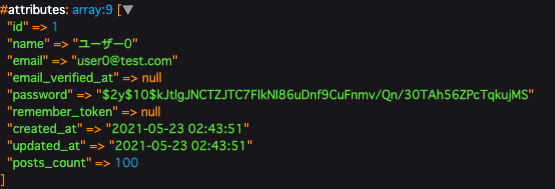How to count the total number of related records in Laravel and display it in a list【withCount】
Thank you for your continued support.
This article contains advertisements that help fund our operations.
Table Of Contents
Let's look at how to count the total number of related records in Laravel and display them in a list. It can be easily done with withCount.
When might you use this?
For example,
① When you want to display the number of posts associated with a user in the user list. (⇦ We'll do this today.)
② When you want to display the number of likes or followers in a list.
This article is a summary of the official documentation
Test Environment
Laravel 6
Counting the total number of related records
This time, we will display the total number of posts that each user has posted in the user list.
If a user has multiple posts, it's enough to establish a one-to-many relationship.
For information on one-to-many relationships,
⇨How to create and display one-to-many relationships in Laravel【hasMany】
Write the relationship in the model.
User.php
public function posts()
{
return $this->hasMany('App\Post');
}Write it in the controller.
Controller
public function index()
{
$users = User::withCount('posts')->take(5)->get();
dd($users);
}The output with dd will show the user list,
and each user's data will be as shown in this screenshot.
In this way,
posts_count => 100the total number of related records is included under the key name "relationship function name_count".
It's super convenient and makes me laugh.
⇨How to resolve the issue of not being able to retrieve withCount in Laravel
Summary
How was it?
We used withCount to count the total number of related records.
By the way, it seems that there is a book that supports Laravel 8.
If you plan to buy a Laravel book, this might be a good choice.
Popular Articles
Deploying a PHP7.4 + Laravel6 project to AWS EC2
Related Articles
How to create and display one-to-many relationships in Laravel【hasMany】
How to create and display many-to-one relationships in Laravel【belongsTo】
How to create one-to-one relationships in Laravel【hasOne】
How to create and display many-to-many relationships in Laravel【belongsToMany】






